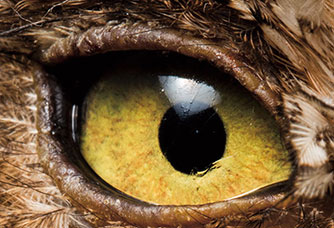The diagram above shows the circled part of the ISS.
On November 2, 2000, a space shuttle carrying three astronauts docked at their temporary home: the International Space Station (ISS). Since then, rotating crews of astronauts have lived on the giant space laboratory for months at a time. In the past 20 years, the ISS has grown from a few small sections, called modules, to a station the size of a football field.
On the ISS, the pull of gravity is much weaker, causing people—and anything that’s not screwed or strapped down—to float. Astronauts on the space station conduct experiments to understand how the low-gravity environment affects their bodies and everything around them. Their research could help future space travelers prepare for much longer missions, such as a trip to Mars.
So what’s it like to live and work more than 200 miles above Earth? We asked astronaut Christina Koch, who knows better than anyone. In February 2020, she returned home after spending 328 consecutive days on the ISS—the longest space mission ever by a woman.

